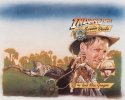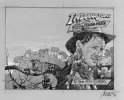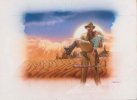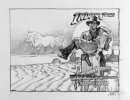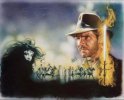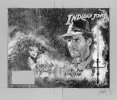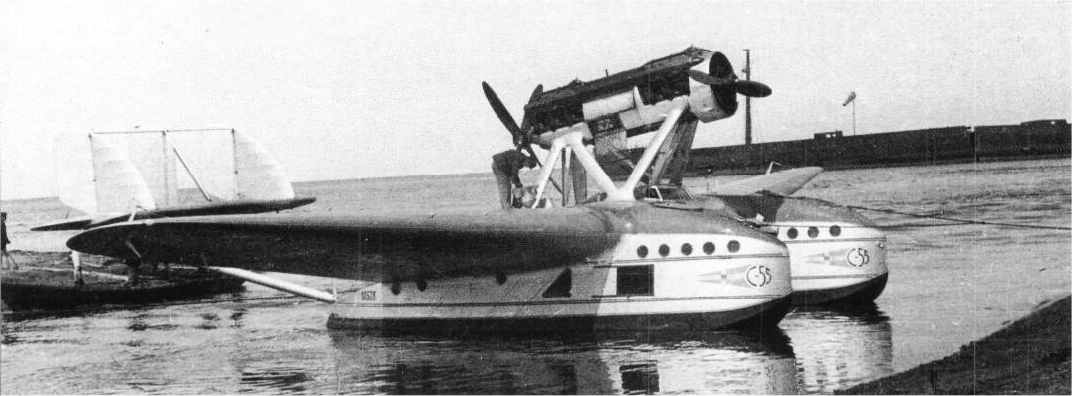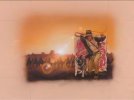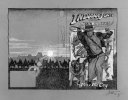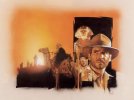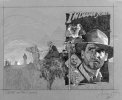WOLFGANG HOHLBEIN STRIKES AGAIN!
Where he tactfully avoided any Germans and politics in his previous book, here both appear; and in FULL FORCE too.
Considering this is a German author writing for a German audience in a series known for using them as cardboard bad guys, I find this really quite courageous.
This is the longest Indiana Jones of them all, but it makes its extended length count.
And where many of the other books draw strong parallels to the films, this story stands squarely on its own two feet as a quality piece of work.
What starts as a simple search for a floating iceberg with a Viking ship frozen inside becomes a quest for survival in one of the toughest environments on Earth.
We open with a lengthy prologue that features "Captain Morton" of the U.S. polar exploration vessel "Poseidon" in the lead, featuring as a kind of *inverted* James-bond opening.
Instead of having our regular hero in an unrelated (previous) story; we have a different character experiencing something that thoroughly DOES relate to the main plot!
This unusual start immediately sets the tone of the story to follow and helps establish the main mystery.
Captain Morton is a relatable character and Hohlbein does not let him go to waste as he sticks around for the entire rest of the book.
He does start to get overshadowed by Indiana as the story progresses (like he should) and gradually loses importance; but his presence even at the end adds an interesting atmosphere of "doom and gloom".
This approach also allows us to meet Indiana Jones from Morton's point of view; which happens in a nicely adventurous setting so that once Indy shows up in chapter 2, he really makes one helluva impact!
Think Harrison Ford's recent film "
Call of the Wild", but featuring our favourite hero in his prime.
Once the story gets to New York, it picks up some brief levity and it becomes clear that Hohlbein's writing is as witty as ever. As before, I had to laugh out loud a good several times; and even sent some quotes to my family so they could enjoy it too.
It's truly entertainingly written!
But don't be mistaken; a comedy, this is not!
Far from it, in fact.
While the longest chapter (90 pages; I kid you not!!) is set on April 1st, what happens is no joke.
This book takes inspiration from psychological submarine thrillers (in a Zeppelin), mixed with an air of looming horror and dread.
Seriously, this story gets DARK in places and it does NOT pull any punches!
Characters die and not even animals are safe.
Like in "
Sky Pirates" and the second half of "
Hollow Earth" this is an ensemble show featuring a team of different characters.
This time, however, Indy is NOT in charge of the expedition, which makes far more sense and creates a nice bit of tension between our hero and the two actual leaders.
The extended length of the book is used well to establish the other characters, allowing them all to develop their own different personalities as they interact with each other; first under regular circumstances, before the pressure is increased and increased; eventually far beyond the breaking point.
Interestingly, this story is set literally RIGHT on the eve of WW II and this plays a substantial role.
While international tensions are already high, officially war has not yet broken out, making for the bizarre situation where German (Nazi) officers are part of a US science expedition.
They are clearly anti-Jew, right from the start all the way to the finish.
And with Indy along for the ride, this goes about as well as you'd expect.
But not all is as it appears. Not by a long shot!
There are multiple twists and turns, which make equal parts sense and can be shockingly surprising at times.
Our "merry" band of characters are very thoroughly *human*. It's not clear from the start who the bad guys are; and the good guys aren't all good either.
In fact, they can all be quite discriminatory, both to women and to Indy's Eskimo/Inuit friend.
Not even our dear hero is infallible.
There are many shades of grey at play and this truly helps give this story far more meaning than "just a throwaway adventure".
The story treats the titular
Norse "Ship of the Gods" with respect, lifting more and more of the veil of mystery surrounding it as it progresses.
There is a lot of scepticism to go around and a lot of the threat is related to "mundane" military might.
But an Indiana Jones story would not be an Indiana Jones story if there were not some sort of "larger than life" element to it.
The big question is: how much is due to magical influences?
And how much is ordinary, harsh human nature?
I can only hope that
the IndyMag will release the English translation story some time soon (ish).
It is well and truly worth a read and I would be really very excited to hear what other people think of it!














